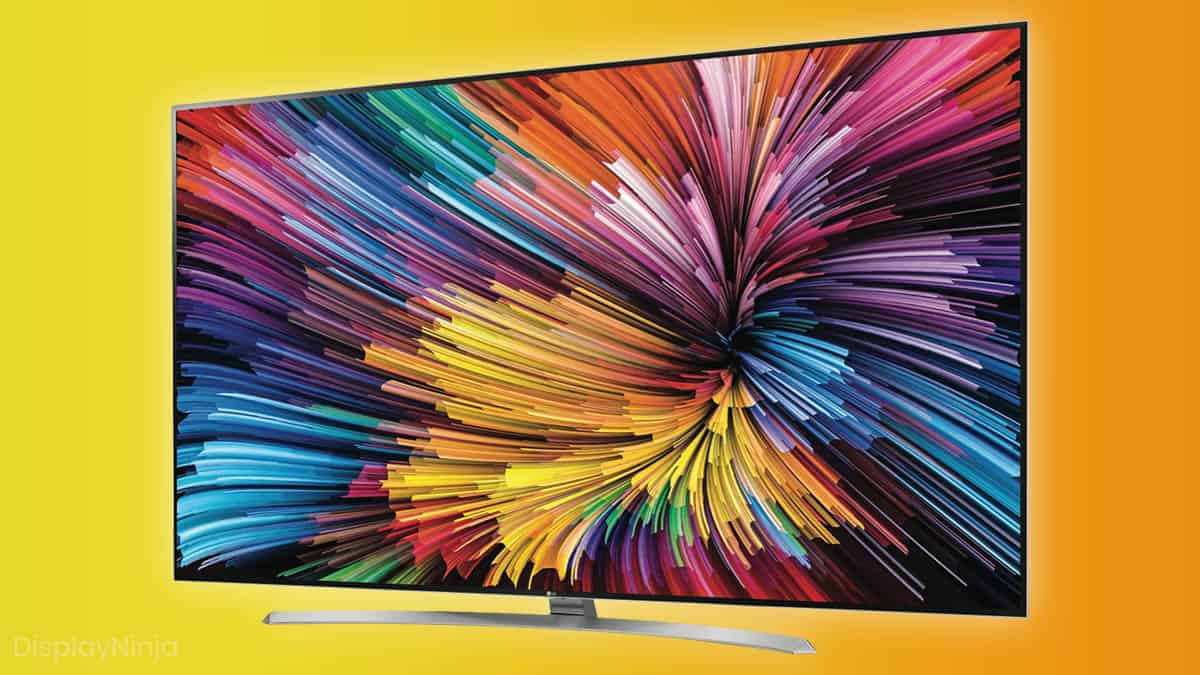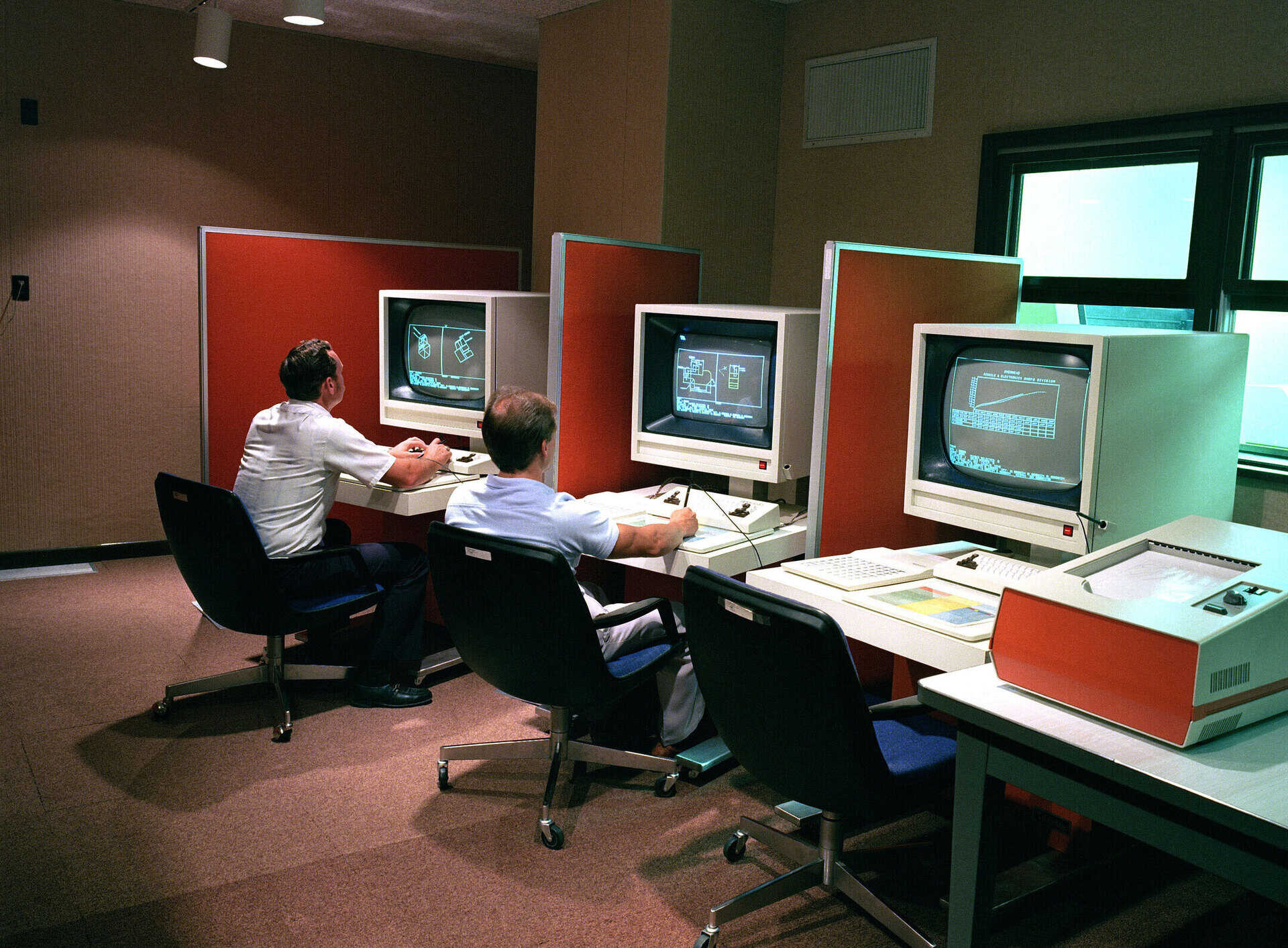Home>Technology>Home Entertainment Systems>Who Invented The Plasma Television?


Home Entertainment Systems
Who Invented The Plasma Television?
Modified: January 6, 2024
Learn about the inventor of the plasma television and how it revolutionized home entertainment systems. Discover the history behind this groundbreaking technology.
(Many of the links in this article redirect to a specific reviewed product. Your purchase of these products through affiliate links helps to generate commission for Storables.com, at no extra cost. Learn more)
Introduction
Welcome to the world of home entertainment systems! In today’s fast-paced and technology-driven world, having a top-notch entertainment system in the comfort of your own home has become a necessity. From watching movies and television shows in high-definition to immersing yourself in the latest video games, a home entertainment system can elevate your entertainment experience to a whole new level.
At the heart of any home entertainment system lies the television, the centerpiece that brings all your favorite content to life. Over the years, televisions have undergone significant advancements in terms of technology and design. From the bulky CRT (cathode ray tube) TVs of the past to the sleek and slim flat-screen televisions of today, the evolution of television technology has been nothing short of remarkable.
In this article, we will dive deep into the invention and development of one particular type of television technology – the plasma television. We will explore the early days of television technology, the need for a new display technology, and the emergence of plasma display technology as a game-changer in the industry. Additionally, we will highlight the key contributors in inventing the plasma television and discuss the rise and fall of this once-popular technology.
So, grab your popcorn, settle into your favorite spot on the couch, and join us as we embark on a journey through the fascinating history of the plasma television!
Key Takeaways:
- The invention of plasma television by pioneers like Dr. Donald L. Bitzer and Dr. Gene Slottow revolutionized home entertainment, offering superior image quality and wide viewing angles, shaping the evolution of television technology.
- Despite the rise and fall of plasma TVs, their legacy lives on in the memories of those captivated by their stunning visuals and immersive experiences, reminding us of the dynamic nature of technology and the continuous quest for superior home entertainment.
Read more: Who Invented The Color Television
The Early Development of Television Technology
Before the advent of plasma television technology, the cathode ray tube (CRT) was the dominant display technology in televisions. CRT TVs functioned by generating an electron beam that would scan across the back of a large glass screen, creating the images that we see on the front. The CRT technology revolutionized the world of home entertainment and remained the standard for several decades.
However, as technology progressed and consumer demands changed, the limitations of CRT TVs became apparent. CRT TVs were bulky and heavy, occupying a significant amount of space in the living room. The large glass screens were also prone to glare and reflections, which could impact the viewing experience. Furthermore, CRT TVs had limitations in terms of resolution and picture quality, leading to the search for a new television display technology.
The need for a new television display technology emerged from the desire to have slimmer, more efficient, and visually superior televisions. Consumers were looking for TVs that could deliver high-resolution images, vibrant colors, and wider viewing angles. This demand sparked a race among companies and researchers to develop a display technology that could fulfill these requirements.
The advancement of liquid crystal display (LCD) technology and the use of light-emitting diodes (LED) for backlighting started to gain traction and eventually became the popular choice for television manufacturers. However, during this development phase, another key player was making significant strides in television technology – the plasma display technology.
Plasma display technology offered a unique alternative to CRT and LCD TVs. It offered superior image quality, deep black levels, high contrast ratios, and wide viewing angles. It quickly gained attention as a potential candidate to replace CRT technology and revolutionize the television market.
In the next section, we will delve deeper into the emergence of plasma display technology and the key pioneers behind its development.
The Emergence of Plasma Display Technology
The emergence of plasma display technology was a significant turning point in the history of television. This revolutionary technology offered a new way to create and display images, surpassing the limitations of CRT and LCD TVs. Let’s explore the pioneers and advancements that led to the rise of plasma display technology.
The Pioneers of Plasma Display Technology:
One of the key pioneers of plasma display technology is Dr. Donald L. Bitzer, along with his team at the University of Illinois. In 1964, Bitzer co-invented the Plasma Display Panel (PDP), which became the foundation for modern plasma televisions. The PDP consisted of thousands of tiny cells filled with gas, sandwiched between glass panels. By applying an electric current to the cells, plasma was formed, producing ultraviolet light. This UV light then interacted with phosphors to create the visible images on the screen.
Another crucial contributor to the development of plasma display technology was Dr. Gene Slottow. Slottow collaborated with Bitzer on the PDP project and played a vital role in improving the technology’s stability and performance by refining the gas mixtures and barriers within the PDP structure.
The Advancements in Plasma Display Panel (PDP) Technology:
Over the years, there have been several advancements in plasma display panel technology that have contributed to the improvement of plasma televisions. One notable advancement is the introduction of sustain electrodes. Sustain electrodes help maintain the plasma and ensure its stability, resulting in a more consistent and reliable image quality.
Another significant advancement in PDP technology was the development of the address electrode matrix. This matrix increased the resolution capabilities of plasma televisions, leading to sharper and more detailed images. The addition of this matrix also helped reduce the “screen door effect,” where a visible grid pattern was seen on the screen due to the gaps between pixels.
Furthermore, advancements in color reproduction and phosphor materials allowed plasma display technology to produce vibrant and accurate colors. Innovators like H. Gene McGill made significant contributions to the development of color plasma displays, enabling televisions to deliver stunning visual experiences with rich, lifelike colors.
These advancements in plasma display technology set the stage for the commercial production of plasma televisions, which we will discuss in the next section.
The plasma television was invented by Donald Bitzer, Gene Slottow, and Robert Willson in 1964.
The Key Contributors in Inventing the Plasma Television
The invention and development of the plasma television were made possible by the invaluable contributions of several key individuals. Let’s explore the key contributors who played a crucial role in bringing this groundbreaking technology to fruition.
Donald L. Bitzer: The Co-Inventor of the Plasma Display Panel
Dr. Donald L. Bitzer, along with his team at the University of Illinois, was instrumental in the invention of the plasma display panel (PDP). In 1964, Bitzer co-invented the PDP, which became the foundation for modern plasma televisions. His work revolutionized the way images were displayed on television screens, introducing a new technology that offered superior image quality and wide viewing angles.
Gene Slottow: A Crucial Contributor to the Development of PDPs
Dr. Gene Slottow collaborated with Donald L. Bitzer on the development of the plasma display panel. Slottow’s expertise in materials science and electrical engineering was pivotal in advancing the stability and performance of PDPs. He played a vital role in refining the gas mixtures and barriers within the PDP structure, ensuring the reliability and longevity of plasma televisions.
H. Gene McGill: The Innovator behind Color Plasma Displays
H. Gene McGill was a pioneering figure in the development of color plasma displays. His groundbreaking work in color reproduction and phosphor materials significantly contributed to advancing the capabilities of plasma televisions. By improving the color accuracy and vibrancy of the plasma display technology, McGill helped create visually stunning displays with lifelike colors, enhancing the overall viewing experience for television audiences.
These key contributors, along with countless researchers, engineers, and innovators, pushed the boundaries of technology and transformed the way we experience television. Their dedication, expertise, and relentless pursuit of excellence were instrumental in the invention and continuous improvement of the plasma television.
Now that we’ve explored the inventors and innovators behind the plasma television, let’s dive into the rise and fall of this once-popular technology in the next section.
The Rise and Fall of Plasma TVs
Plasma televisions experienced a period of immense popularity and success, captivating consumers with their stunning image quality and sleek design. However, despite their initial rise to prominence, plasma TVs eventually faced tough competition and gradually faded from the market. Let’s explore the rise and fall of plasma televisions.
Commercial Production of Plasma Televisions
Following the development of plasma display technology, commercial production of plasma televisions began in the late 1990s and early 2000s. Companies like Panasonic, LG, and Samsung embraced this new technology and brought plasma televisions to the consumer market. The large, flat-panel screens, vibrant colors, and wide viewing angles of plasma TVs gained the attention and admiration of home theater enthusiasts.
As technology progressed, plasma TVs continued to evolve, offering improved picture quality, higher resolutions, and more advanced features. They became the go-to choice for those seeking a high-end home entertainment system, especially for movie and sports enthusiasts who appreciated the deep blacks and fast motion handling that plasma screens excelled in.
The Competition with LCD and LED Technologies
While plasma TVs were gaining popularity, they faced fierce competition from LCD (liquid crystal display) and later LED (light-emitting diode) technologies. LCD TVs, initially considered inferior to plasma in terms of image quality, started catching up with advancements in panel technology. LED TVs, a further development of LCDs with LED backlighting, offered even thinner designs and greater energy efficiency.
One of the key advantages of LCD and LED technologies was their ability to produce brighter images, which appealed to consumers in well-lit environments. Additionally, LCD and LED TVs were more energy-efficient compared to plasma TVs, which often consumed more power due to the nature of plasma display technology.
Moreover, LCD and LED TVs benefited from economies of scale, leading to lower production costs and more affordable prices, making them accessible to a wider range of consumers. As a result, plasma TVs became less competitive in terms of pricing, which ultimately contributed to their decline.
With the decline in demand and the emergence of newer technologies, manufacturers gradually phased out the production of plasma TVs. Panasonic, one of the leading producers of plasma televisions, discontinued their production in 2013, symbolizing the end of an era for this once-popular technology.
Despite their decline, the legacy of plasma televisions remains in the memories of those who reveled in their stunning visuals and immersive home theater experiences. Today, LCD and LED technologies dominate the television market, offering a wide range of options to suit every viewer’s preferences and budget.
As the world of home entertainment continues to evolve, we can look back at the rise and fall of plasma TVs as a testament to the continuous innovation and ever-changing landscape of television technology.
Read more: Who Invented Radio And Television
Conclusion
The invention and development of the plasma television marked a significant milestone in the evolution of home entertainment systems. It offered a new level of image quality and viewing experience that captivated audiences for several decades. However, as technology progressed and consumer demands shifted, plasma TVs faced tough competition from LCD and LED technologies, eventually leading to their decline and discontinuation.
Throughout their lifespan, plasma televisions showcased remarkable advancements in display technology. The pioneering work of individuals like Donald L. Bitzer, Gene Slottow, and H. Gene McGill paved the way for the creation of plasma display panels and color reproduction on television screens.
Plasma TVs were loved for their deep blacks, high contrast ratios, and excellent motion handling, making them a favorite choice for movie enthusiasts and sports fans. However, challenges such as bulkiness, higher power consumption, and increasing competition from LCD and LED technologies led to their gradual fade from the market.
Today, LCD and LED televisions dominate the market, offering sleek designs, improved brightness, and energy efficiency. These technologies continue to push the boundaries of display technology, providing consumers with a wide range of options to suit their preferences and budget.
Although plasma TVs have become a thing of the past, their legacy lives on in the memories of those who reveled in their captivating visuals and immersive viewing experiences. The rise and fall of plasma TVs serve as a reminder of the dynamic nature of technology and the ever-evolving landscape of home entertainment.
As we move into the future, we can expect further advancements in display technology, with innovations like OLED and QLED pushing the boundaries even further. The quest for superior image quality, immersive experiences, and seamless integration with other smart devices continues to drive the home entertainment industry.
So, as you sit down to enjoy your favorite movie or immerse yourself in the world of gaming, spare a thought for the pioneers who paved the way for the televisions we enjoy today. And remember, no matter the technology, the true power of a home entertainment system lies in the joy and connection it brings to our lives.
Frequently Asked Questions about Who Invented The Plasma Television?
Was this page helpful?
At Storables.com, we guarantee accurate and reliable information. Our content, validated by Expert Board Contributors, is crafted following stringent Editorial Policies. We're committed to providing you with well-researched, expert-backed insights for all your informational needs.















0 thoughts on “Who Invented The Plasma Television?”